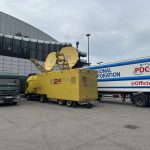Power usage effectiveness is a metric that evaluates the energy efficiency of data centers worldwide. However, comparing measurements is difficult since factors like a data center’s location and server workloads impact PUE readings.
Look further into how to calculate PUE, how data centers benefit from the calculations and how to understand PUE ratings.
Defining PUE
The calculation to determine PUE is the total data center energy divided by IT energy. Power samples are indicators of efficiency, but they are not acceptable PUE nor representative of actual facility operation — particularly when taken at the most favorable part of a day.
Data from specific areas within the data center helps calculate PUE. The primary area is the “white space” that contains all the computing equipment. Also, include all operation centers, test labs and other areas that use the same dedicated power and cooling systems as the white space. Separate power systems or mixed-use systems are not part of the calculation. Admins must convert any sustainable energy resources that run the dedicated power and cooling system into electrical energy equivalents.
Understanding PUE numbers
PUE must always be greater than 1.0. PUE of 1.0 indicates the perfect condition of power delivery. Perfect conditions include no loss of electricity through the wires and passive cooling without fans moving air.
PUE in the range of 1.3 to 3.0 is most common. PUE of 1.6 or better is achievable in most data centers with proper attention to both electrical and mechanical design, as well as operational practices.
PUE numbers are not intuitive and are easily misunderstood. PUE of 2.0 means IT equipment (ITE) uses the same amount of energy as the power and cooling equipment. PUE of 3.0 means power and cooling use twice the energy consumed by ITE they support.
Data center infrastructure efficiency (DCiE) also measures energy efficiency. DCiE is the reciprocal of PUE, reported as a number between 0 and 100. PUE of 1.0 is equal to DCiE 100, or 100% efficiency. PUE of 2.0 is equal to DCiE 50, or 50% efficiency. PUE of 3.0 is equal to DCiE 33, or 33% efficiency. PUE metrics are most commonly reported, although DCiE yields a more intuitive number. PUE of 2.0 leaves more room for interpretation than an energy efficiency report of 50%.
PUE levels
PUE measurements include Level 1, Level 2 and Level 3. Other labels include L1, L2, L3 or PUE1, PUE2 and PUE3. Each level provides a more accurate ratio of IT energy to total data center energy. PUE1 is most frequently reported. This chart shows requirements for each level.
Record PUE1 readings manually, as well as PUE2 daily readings if they’re at the same time every day. More frequent readings for PUE2 or PUE3 require automatic recording for consistency. The energy number used for PUE calculations is the average of readings over a specific time frame. This can take several months and best represents reality if taken over a full year.
Combine readings from multiple uninterruptible power supplies, power distribution units or intelligent PDUs to obtain a total energy number. Measuring actual energy in kilowatt-hours, rather than power in amps, kilowatts or kilovolt-amperes, requires good recording power meters that can be costly to install. Power meters measure and integrate voltage, amperage and power factors in real time. Meters should guarantee utility rate accuracy of at least 1%.
Special uses of PUE
Partial PUE, which is a load measured on specific systems or equipment, identifies low-efficiency systems and tracks improvements when changes occur. Partial PUE is for internal use only. It is not a reportable number since there is no standard definition for what it encompasses.
PUE numbers can compare one data center’s energy efficiency with another. However, this comparison is only accurate if measurements are taken the same way in all locations and over the same time frame. When making comparisons, admins must understand that different locations have different climate conditions that significantly affect cooling requirements and PUE. Admins should also keep in mind that reduced energy consumption does not always lead to a low PUE level.
Neither ITE nor power and cooling configurations are identical in two locations. The most accurate comparisons are possible over the longest realistic time frame. This is because compute loads in different locations can peak at different times of the day and on different days of the year.
Robert McFarlane is senior principal in charge of data center design for the international consulting firm Shen Milsom and Wilke LLC. McFarlane has spent more than 40 years in communications consulting and has experience in every segment of the data center industry.















